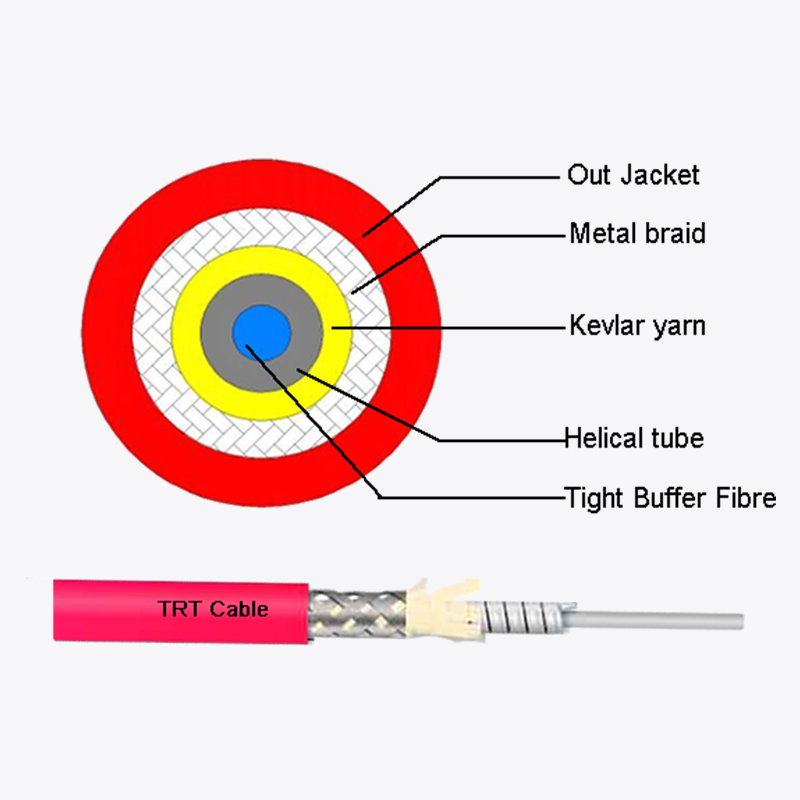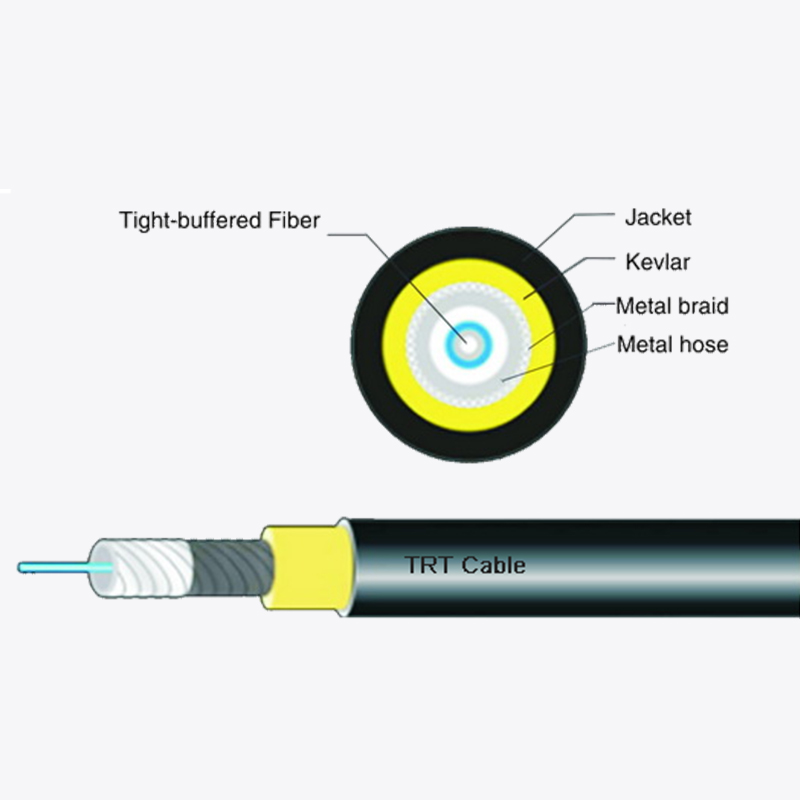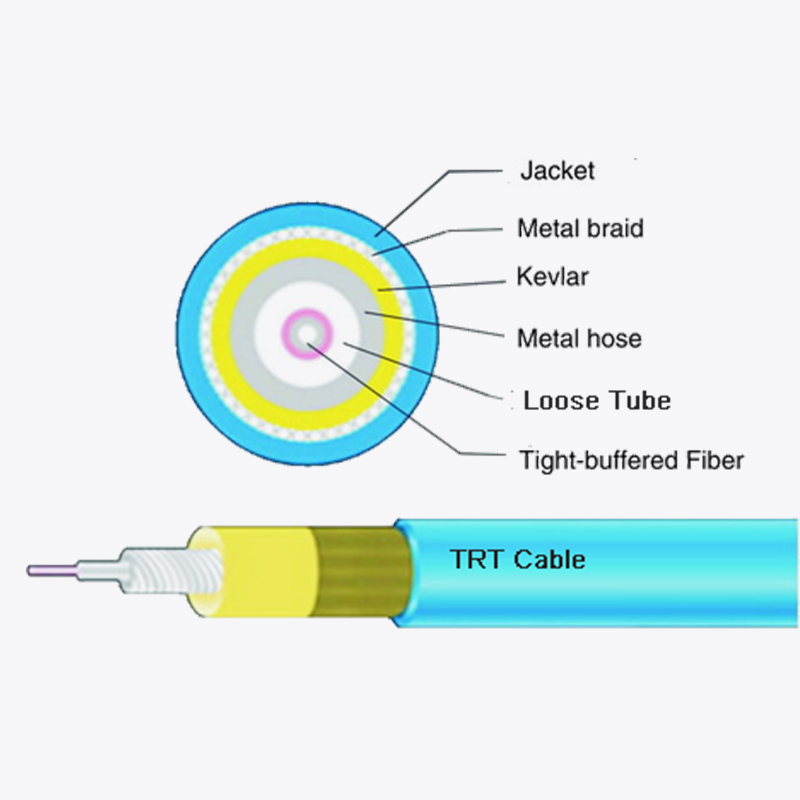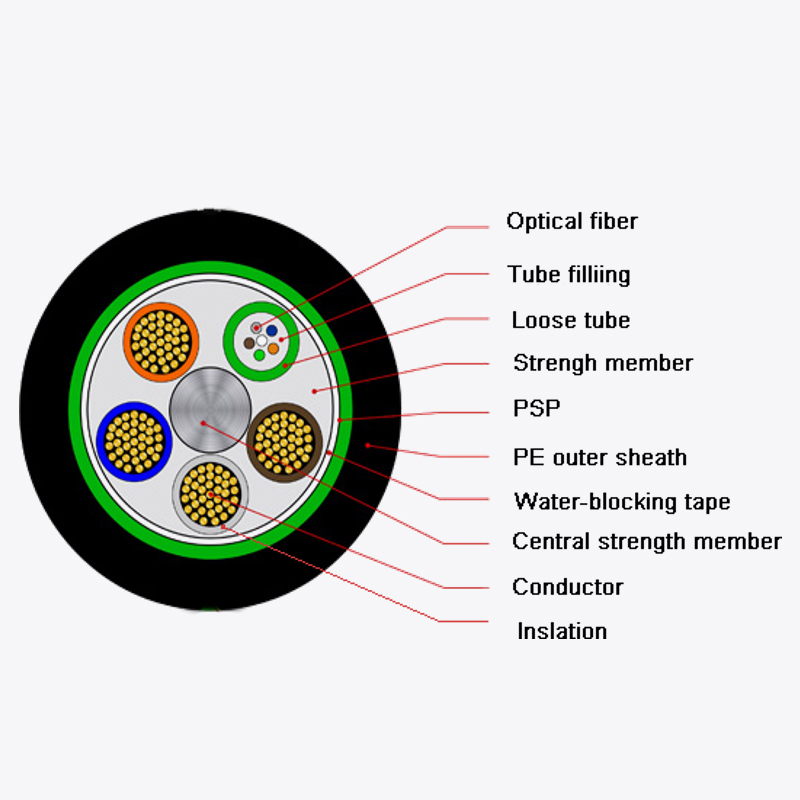Web Menu
Product Search
Exit Menu
What Role Do Waterproof Pigtails Play in Ensuring Network Uptime?
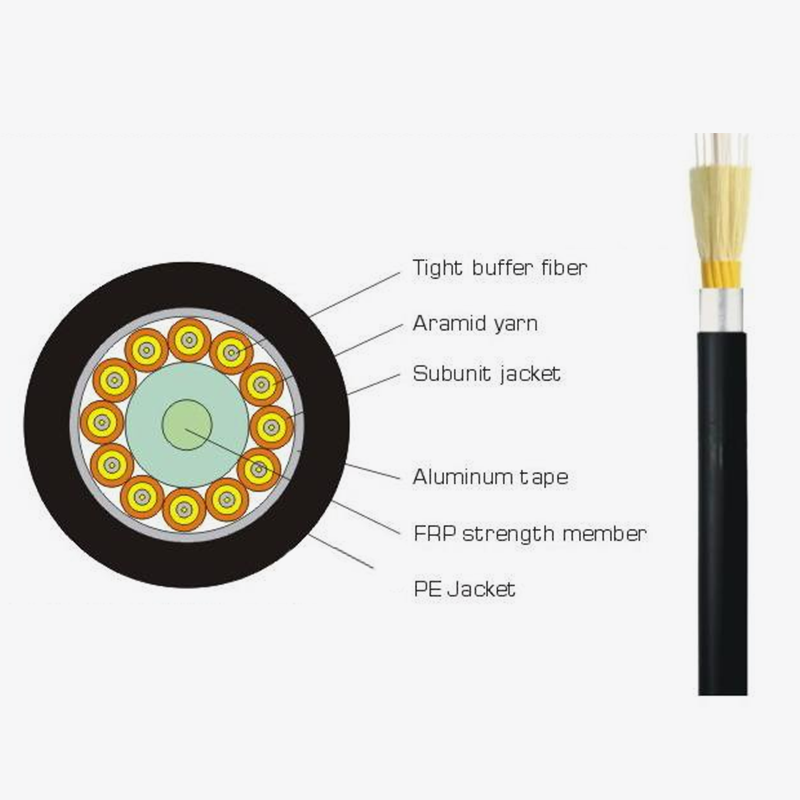
What Role Do Waterproof Pigtails Play in Ensuring Network Uptime?
In the modern world, network uptime is not merely a performance metric; it is a critical foundation for economic activity, public safety, and social connectivity. Every dropped connection, every service interruption, carries a tangible cost. As fiber optic networks expand from climate-controlled data centers into harsh outdoor environments to deliver services like FTTH (Fiber to the Home), 5G backhaul, and industrial IoT, the points of connection become vulnerable to failure. It is at these critical junctures that the waterproof pig-tail fiber optic cable gja proves to be an indispensable component.
Understanding the Critical Link: What is a Waterproof Pigtail?
A fiber optic pigtail is a short length of cable that is terminated with a connector on one end and has exposed fiber on the other. The connectorized end plugs into a patch panel or active equipment, while the bare fiber end is fusion spliced to the main fiber optic cable. This creates a permanent, low-loss connection point. A standard pigtail functions well in protected indoor settings. However, when this same connection point is exposed to the elements, it becomes a significant liability.
This is where the waterproof pig-tail fiber optic cable gja is required. This product is engineered specifically for challenging environments. The “gja” designation often refers to a specific standard or model that signifies a robust construction, typically featuring a ruggedized jacket, strengthened armoring, and, most critically, an integrated sealing mechanism around the connector. This transforms a potential point of failure into a fortified, reliable interface. The fundamental purpose of this design is to prevent the ingress of moisture, dust, and other contaminants that can degrade or completely sever the optical signal.
The Primary Threat to Uptime: How Moisture Compromises Fiber Optic Links
To appreciate the value of a waterproof pig-tail fiber optic cable gja, one must first understand the mechanisms by which moisture leads to network failure. Water is a pervasive and destructive force in telecommunications infrastructure, and its impact on fiber optic systems is both chemical and physical.
Hydrogen Loss and Fiber Attenuation is a primary concern. When moisture penetrates a cable assembly, it can lead to the generation of hydrogen molecules. These molecules can diffuse into the glass fiber itself, causing absorption and scattering of the light signal. This phenomenon, known as hydrogen-induced attenuation, increases the signal loss across the link. Over time, this can push a link’s attenuation budget to its limit, resulting in intermittent errors or a complete loss of service. This is a slow, insidious process that can be difficult to diagnose until it causes a full outage.
Physical Damage from Freeze-Thaw Cycles presents a more immediate mechanical threat. Water that has seeped into a connector or cable structure will freeze in cold temperatures. As water freezes, it expands, exerting tremendous pressure on delicate internal components. This can cause microscopic cracks in the glass fiber, misalign the ceramic ferrule within the connector, or even fracture the ferrule itself. These physical distortions lead to a sharp increase in insertion loss and back reflection, instantly degrading performance. Repeated freeze-thaw cycles will inevitably destroy the integrity of the connection.
Corrosion and Contamination is another critical failure mode. Moisture, especially when combined with airborne pollutants, leads to the corrosion of metal components within the connector, such as the spring and ferrule sleeve. It also allows dust and other particulates to settle on the end-face of the ferrule. When mated, a contaminated or corroded connector can scratch the pristine end-face of the equipment port, causing permanent damage to both the pigtail and the expensive active gear. This not only causes immediate signal issues but also leads to higher costs for repairs and replacements.
The use of a waterproof pig-tail fiber optic cable gja is a direct and effective countermeasure to these threats. By creating a hermetic seal, it prevents the initial ingress of moisture, thereby eliminating the root cause of hydrogen loss, physical freeze-thaw damage, and corrosive contamination.
Design Features that Fortify the Network: Anatomy of a Waterproof Pigtail
The reliability of a waterproof pig-tail fiber optic gja is not accidental; it is the result of deliberate engineering choices that address each vulnerability point in a standard pigtail. These features work in concert to create a robust barrier against the environment.
The armored cable design is a fundamental element of its durability. Unlike standard patch cords, these pigtails often incorporate a layer of steel or aluminum tape, or even interlocking metal armor, beneath the outer jacket. This provides crucial protection against crush resistance and rodent protection, ensuring that the delicate glass fibers within are not damaged by physical pressure or animal activity in underground or aerial deployments.
The outer jacket material is another critical differentiator. Instead of standard PVC, a waterproof pig-tail fiber optic cable gja typically uses a LSZH (Low Smoke Zero Halogen) or polyethylene compound. Polyethylene is renowned for its excellent moisture resistance and durability against UV radiation, making it ideal for direct burial or prolonged outdoor exposure. LSZH jacketing is critical for indoor-outdoor entry points as it enhances fire safety by emitting minimal smoke and no toxic halogens when exposed to fire.
The most defining feature, however, is the connector boot and sealing mechanism. This is where the “waterproof” claim is validated. High-quality designs employ a multi-stage sealing approach. This often includes a robust, flexible rubber boot that forms a tight seal with the cable jacket, combined with a compression gland or O-ring within the connector body itself. When the connector is plugged into a compatible outdoor enclosure or waterproof adapter, this system creates a complete seal that can typically withstand immersion and high-pressure water jets, often rated under the IP67 or IP68 standard. This level of ingress protection is non-negotiable for ensuring long-term reliability in exposed locations.
The following table summarizes the key protective features and their functions:
| Feature | Function | Direct Benefit for Uptime |
|---|---|---|
| Armored Cable | Protects against crushing, chewing, and physical stress. | Prevents fiber breakage from external forces, eliminating physical layer outages. |
| PE or LSZH Jacket | Resists moisture absorption, UV degradation, and fire. | Prevents jacket deterioration and fiber exposure, ensuring long-term mechanical integrity. |
| IP67/IP68 Sealing | Blocks ingress of water and dust at the connector interface. | Eliminates moisture-related attenuation, hydrogen loss, and freeze-thaw damage. |
| Strain Relief Boot | Absorbs bending stress and prevents cable pull-out. | Maintains signal integrity by protecting the fragile fiber at the termination point. |
Application-Specific Impact on Network Reliability
The value of a waterproof pig-tail fiber optic cable gja is most clearly demonstrated in its real-world applications. In each of these scenarios, the consequences of a connection failure are severe, making the investment in a robust pigtail a critical strategy for maintaining uptime.
In FTTH (Fiber to the Home) Access Networks, thousands of connection points are distributed across a wide geographic area. These terminations occur in fiber distribution hubs (FDHs) and fiber optic terminal boxes,
which may be mounted on poles, placed in underground vaults, or attached to the sides of buildings. These environments are subject to extreme temperature fluctuations, high humidity, and occasional flooding. A single faulty connection in a central FDH can disrupt service for dozens or even hundreds of homes. By deploying a waterproof pig-tail fiber optic cable gja at these points, service providers drastically reduce the rate of moisture-related faults, which are a leading cause of chronic, intermittent service issues and costly truck rolls for repairs. This directly translates to higher customer satisfaction and lower operational expenditures.
For 5G and Mobile Backhaul Networks, the demand for reliability is exceptionally high. 5G small cells are deployed on streetlights, utility poles, and building facades, with no climate control. The waterproof pig-tail fiber optic cable gja is used to connect the backbone fiber to the cell site’s radio unit. Any downtime at a single cell site can create a coverage gap, impacting everything from mobile broadband to critical public safety communications. The ruggedized and sealed nature of these pigtails ensures that these exposed nodes can withstand years of rain, snow, and pollution without degradation, forming a resilient and dependable backhaul network that supports the promise of ubiquitous 5G connectivity.
Industrial and Enterprise Settings present a different, but equally demanding, set of challenges. Manufacturing plants, energy substations, and transportation systems often have harsh conditions involving humidity, chemical exposure, and significant vibration. In a SCADA (Supervisory Control and Data Acquisition) system for a utility company, for instance, a network failure can disrupt the monitoring and control of critical infrastructure. The armored and sealed construction of a waterproof pig-tail fiber optic cable gja provides the necessary resilience against these industrial hazards, ensuring that data links for control systems, security cameras, and operational networks remain stable and operational, thereby safeguarding productivity and safety.
The Total Cost of Ownership: A Justification for Reliability
When procurement decisions are made, the initial unit cost of a component is often a primary focus. However, a more accurate assessment for network infrastructure is the Total Cost of Ownership (TCO). While a standard pigtail may have a lower purchase price, a waterproof pig-tail fiber optic cable gja offers a significantly lower TCO, which is intrinsically linked to higher network uptime.
The most substantial cost in network maintenance is not the component itself, but the labor required to locate and replace it. A field technician’s truck roll, especially to a remote or difficult-to-access location like a cell tower or a buried vault, is an expensive endeavor. This process involves diagnostic time, travel time, the technician’s labor time for the repair, and the potential cost of network downtime during the outage. A single failure can easily cost hundreds or thousands of times the price difference between a standard and a waterproof pigtail.
Furthermore, the cascading effects of an outage must be considered. For a service provider, network downtime leads to customer churn, service level agreement (SLA) penalties, and damage to brand reputation. For an industrial operator, it can lead to production halts, safety risks, and data loss. The robust design of a waterproof pig-tail fiber optic cable gja is an insurance policy against these much larger financial and operational risks. Its higher initial cost is amortized over a long, trouble-free service life, during which it prevents multiple potential failure events.
Installation and Maintenance Best Practices for Maximized Uptime
Even the most robust component can fail if installed incorrectly. To fully leverage the uptime benefits of a waterproof pig-tail fiber optic cable gja, proper handling and installation procedures are paramount.
First and foremost, inspecting the connector end-face before installation is a critical step. Using a fiber optic microscope to verify that the ferrule is clean and free of defects ensures an optimal optical connection from the start. A single dust particle can cause significant back reflection and loss, undermining the performance the waterproof pigtail is designed to protect.
During the installation, care must be taken to ensure the integrity of the sealing system. This means correctly tightening any threaded seals or compression glands according to the manufacturer’s specifications. Over-tightening can damage the O-rings, while under-tightening will leave gaps for moisture ingress. The cable should be routed in a way that avoids sharp bends, and the integrated strain relief boot should be properly seated to prevent stress on the fiber at the termination point.
For the fusion splicing process, which creates the permanent link to the backbone fiber, a high-quality splice protector or closure must be used. The waterproof pig-tail fiber optic cable gja protects its own segment, and this protection must be continued through the splice point. The entire assembly, including the splice, should be housed within a compatible, sealed fiber optic closure to form a complete, end-to-end protected link.
Finally, periodic maintenance, though minimal for these sealed systems, should include a visual inspection of the cable jacket and connector boot for any signs of cracking, weathering, or physical damage. Proactive replacement of a component showing early signs of wear is far more cost-effective than reacting to a failure.
Conclusion: An Essential Component for Modern Network Resilience
In conclusion, the role of the waterproof pig-tail fiber optic cable gja in ensuring network uptime is both fundamental and multifaceted. It acts as the first and most critical line of defense at the most vulnerable points in a fiber network—the connection interfaces. By systematically eliminating the threats posed by moisture, contamination, and physical stress through its engineered design, it prevents the most common causes of signal degradation and failure in outdoor and harsh environments.
From enabling the dense rollout of FTTH networks to forming the resilient backbone of 5G and industrial IoT systems, this component is not a mere accessory but a core requirement for any reliable network design. The investment in a high-quality waterproof pig-tail fiber optic cable gja is a direct investment in reduced operational costs, minimized service interruptions, and enhanced customer trust. In the relentless pursuit of five-nines (99.999%) availability and beyond, paying meticulous attention to every component, especially the humble yet critical pigtail, is not just good practice—it is essential.
 Address:Zhong'an Road, Puzhuang Town, Suzhou City, Jiangsu Prov., China
Address:Zhong'an Road, Puzhuang Town, Suzhou City, Jiangsu Prov., China Phone:+86-189 1350 1815
Phone:+86-189 1350 1815 Tel:+86-512-66392923
Tel:+86-512-66392923 Fax:+86-512-66383830
Fax:+86-512-66383830 Email:[email protected]
Email:[email protected] Wechat: xiaobin18913501815
Wechat: xiaobin18913501815 whatsapp: +86 18913501815
whatsapp: +86 18913501815
 0
0

 English
English русский
русский Español
Español Português
Português عربى
عربى